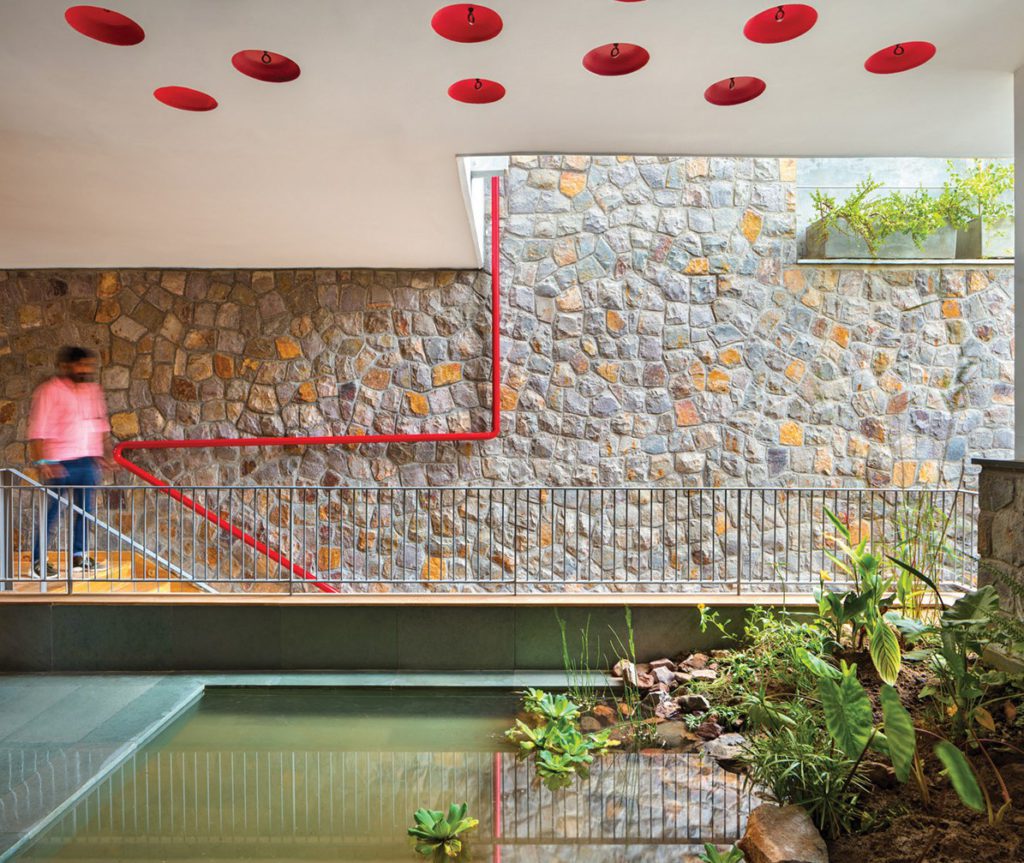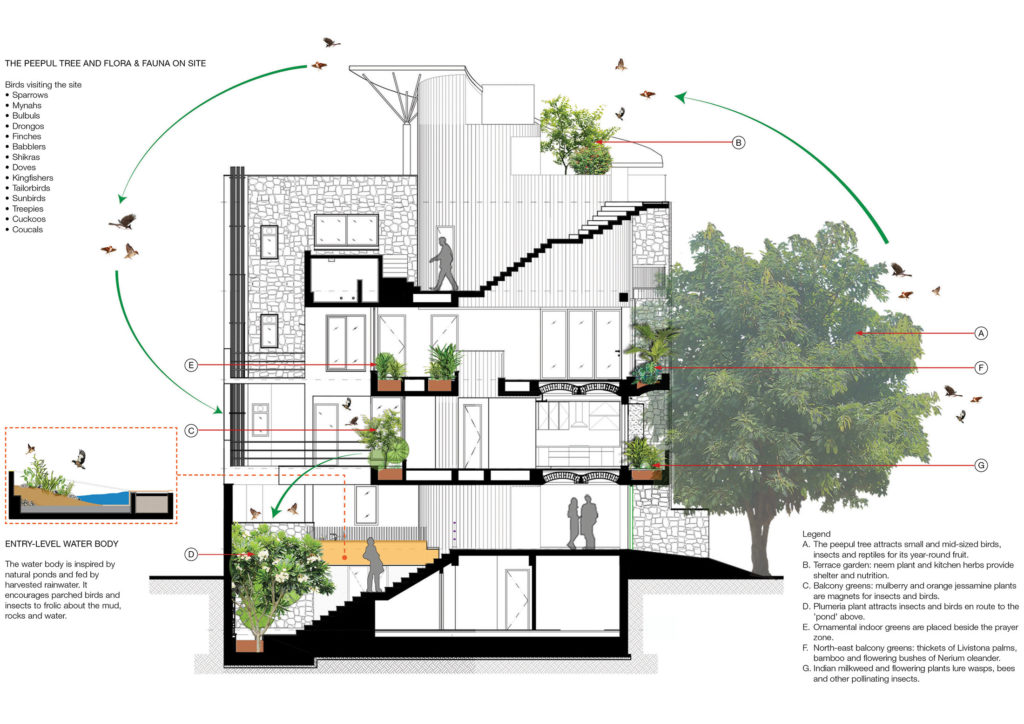House of the Sacred Fig: The People Tree House
September 20, 2023
The peepul tree (sacred fig) is a species native to the Indian subcontinent. Long-living and valued for its medicinal properties, this auspicious tree is also deeply rooted in the local context for its religious significance—it is known as the tree under which the Buddha became enlightened. It is no wonder that this residential project places its peepul tree, located at the eastern corner of the site, as the heart of its architectural intent.
FLORA AND FAUNA AS EQUAL INHABITANTS OF ARCHITECTURE
The architects began the design process by undertaking a detailed study of the flora and fauna of the neighbourhood’s open green spaces. They observed that the peepul tree is the first point of ingress for insects, birds and small animals, contributing to form a closed-loop sustainable system. The tree bears fig fruit all year round, which is a source of nourishment for frugivorous and insectivorous birds, mammals and insects.
Feeding and pollinating birds and insects visiting the peepul tree are lured to explore carefully selected and located indigenous fruiting and flowering vegetation at various levels of the house. Local gardeners and planters assisted the designers and clients to introduce indigenous plants into the building. The carefully tailored potting mix, a home for vital soil-borne insects, is layered with horticultural waste, leaves and twigs from local parks and greens, and household waste collected from the community.


Fruiting plants like mulberry and orange jessamine are on the bedroom floors; neem, medicinal and cooking herbs are at the kitchen level with thickets of Livistona palms, bamboo, flowering bushes of Nerium oleander and Indian milkweed. Flowering vines and creepers of blue pea, and Madhumalti planted on the terrace create a ‘bio-fence’ that ‘hang’ over the balconies and allow finches, sparrows and other mid-sized birds and insects to stop over as they make their way to the flora situated at the rear of the building. The rooftop kitchen garden houses seasonal greens.
At the entry level a natural pond fed by harvested rainwater, which encourages parched birds and insects to frolic about the mud, rocks and water, is installed.
Kush Sethi, an ecological gardener who worked closely with the architects and clients, said, ‘‘The water body was inspired by countryside lakes and ponds. Leftover stone rubble and earth support aquatic plants, insect and amphibian life. The idea was to add bio-mass to the soil and offer hiding/perching spaces for birds using a mix of marsh species and wild grass. It was a delight to see bulbuls and doves perched on the basket planters, suspended from the filler slab.’’
[This is an excerpt. Subscribe to the digital edition or hardcopy to read the complete article.]
PROJECT DATA
Project Name
The People Tree House
Location
Noida, National Capital Region, India
Completion Date
2022
Site Area
162 square metres
Gross Floor Area
650 square metres
Number of Rooms
10
Building Height
15 metres
Clients/Owners
Dr Nitin; Sanchita Ghonge
Architecture Firm
Archiopteryx
Principal Architect
Akshay Shrinagesh
Main Contractor
Archiopteryx
Mechanical & Electrical Engineer
Archiopteryx
Civil & Structural Engineer
Archiopteryx
Images/Photos
Andre Fanthome
Read more stories from FuturArc 3Q 2023 Green Awards: Cross-Generational Architecture!

To read the complete article, get your hardcopy at our online shop/newsstands/major bookstores; subscribe to FuturArc or download the FuturArc App to read the issues.


